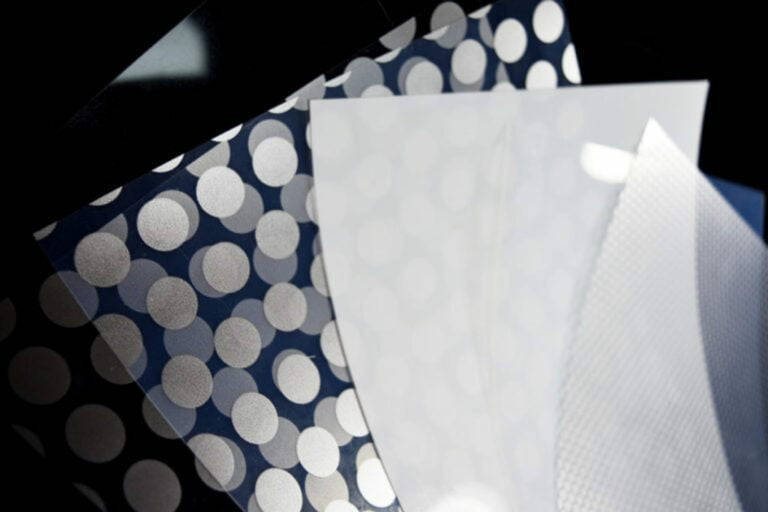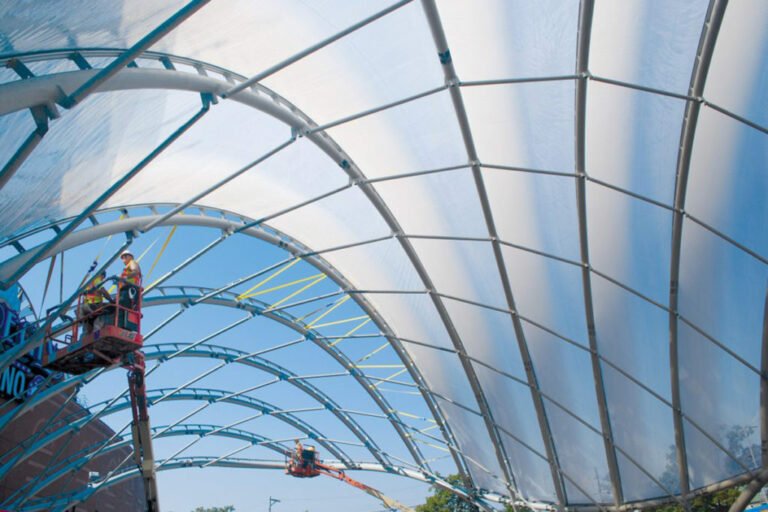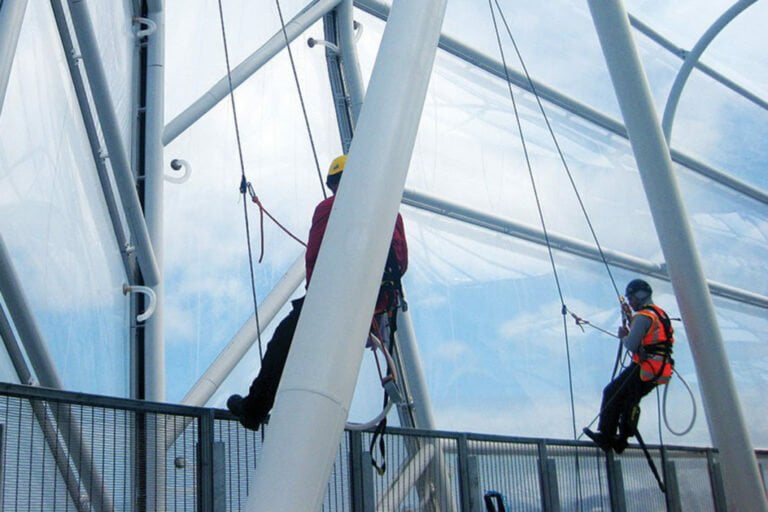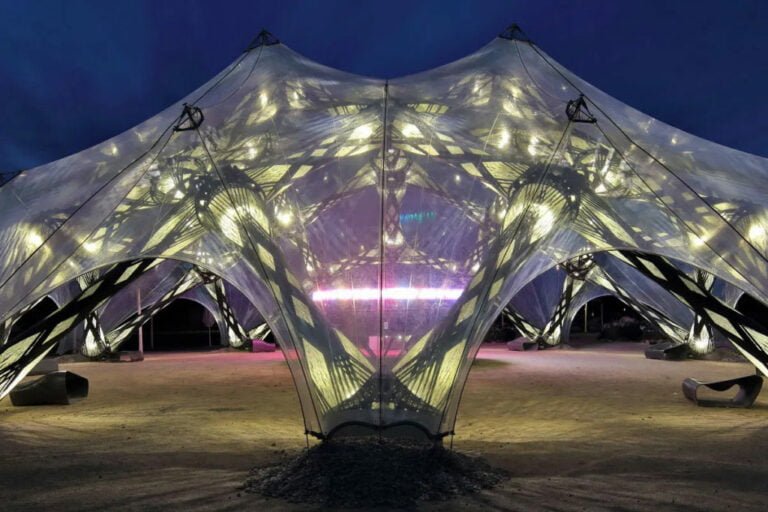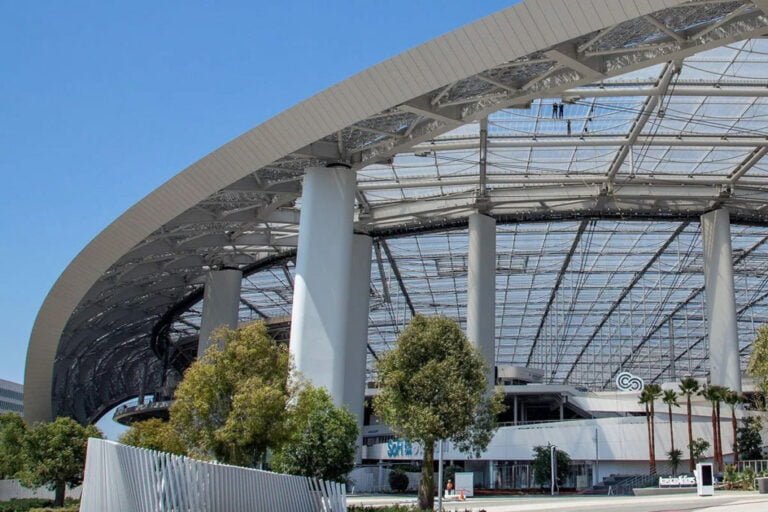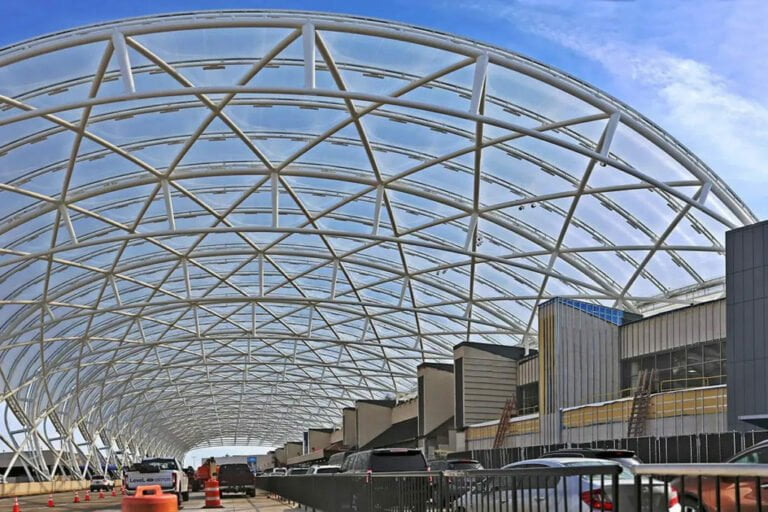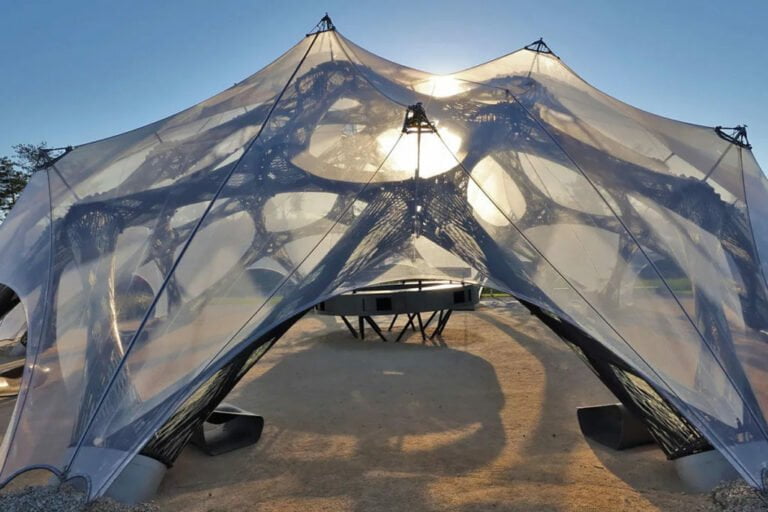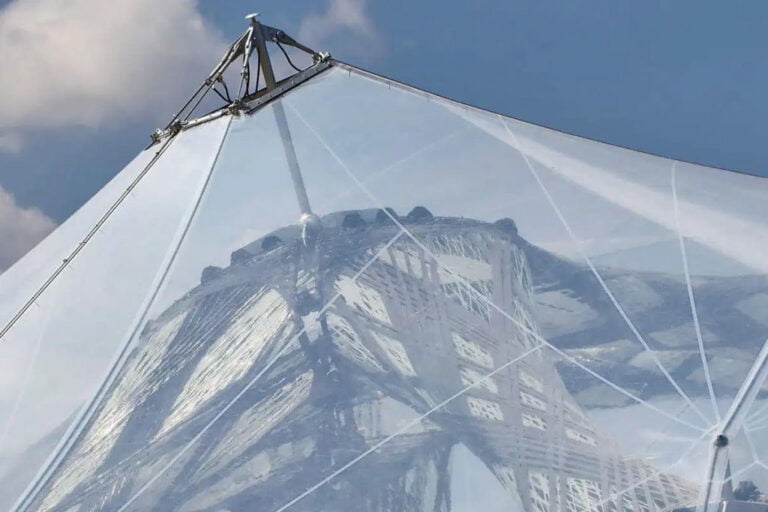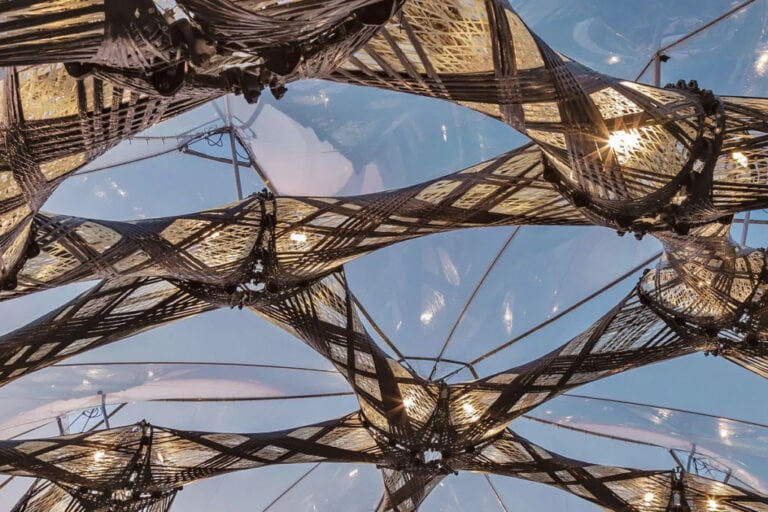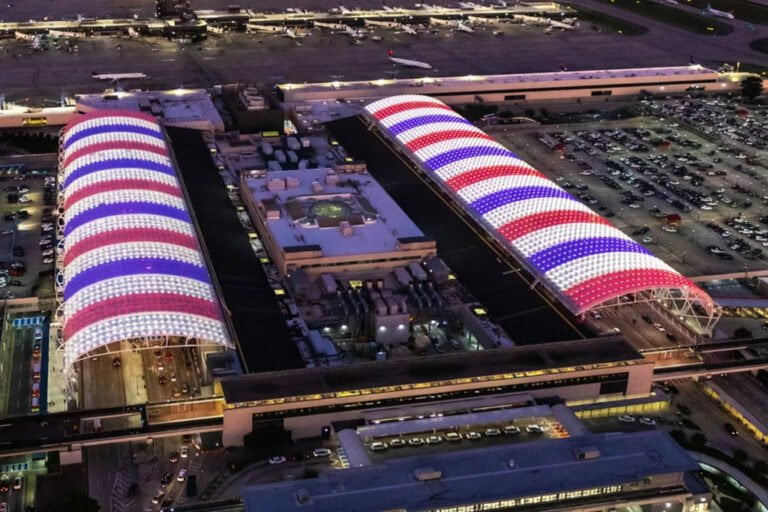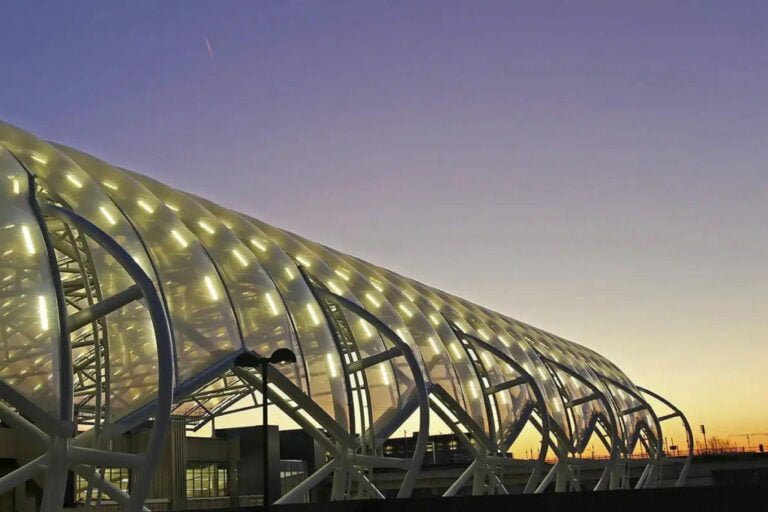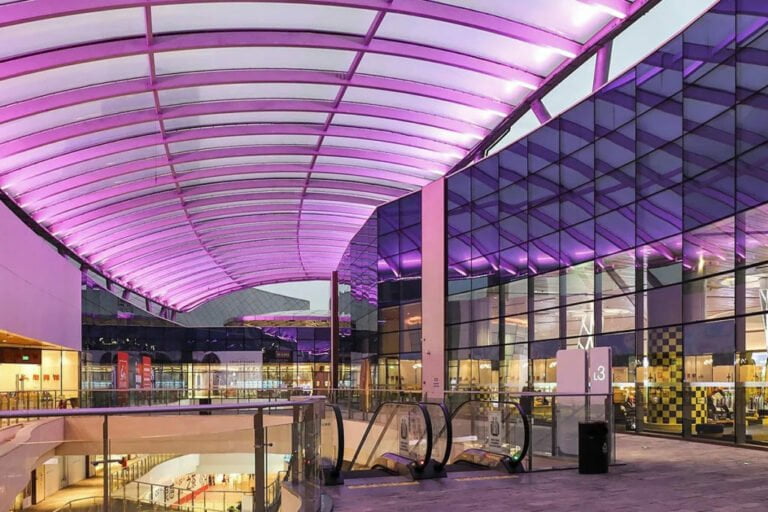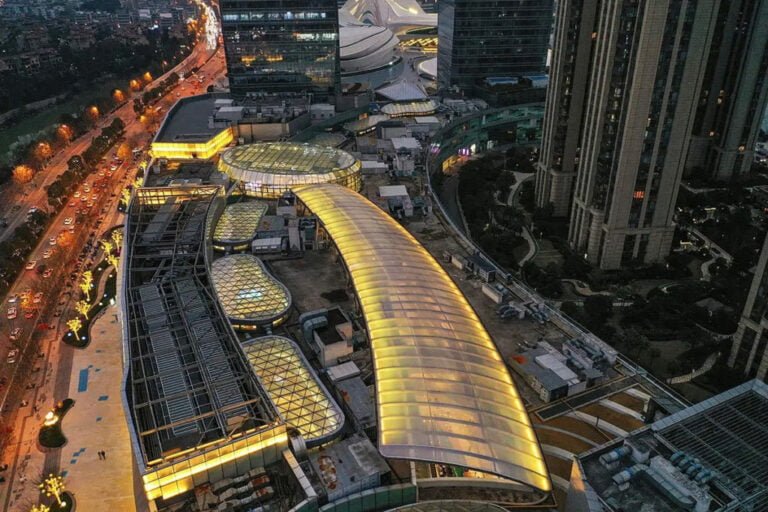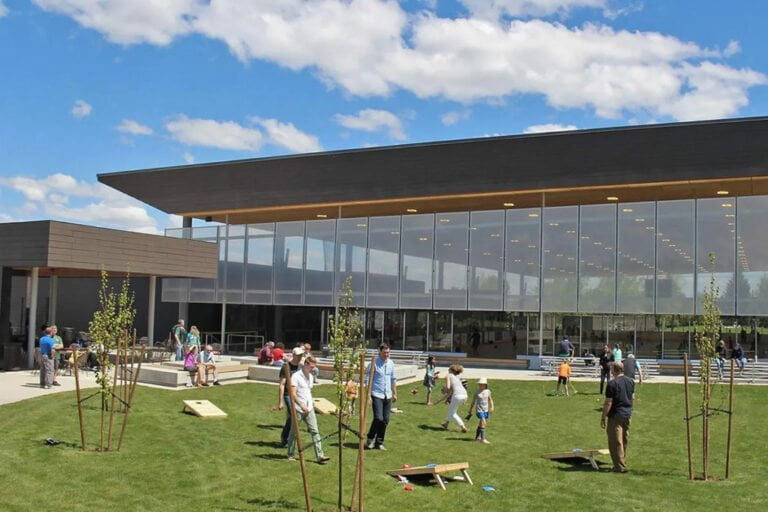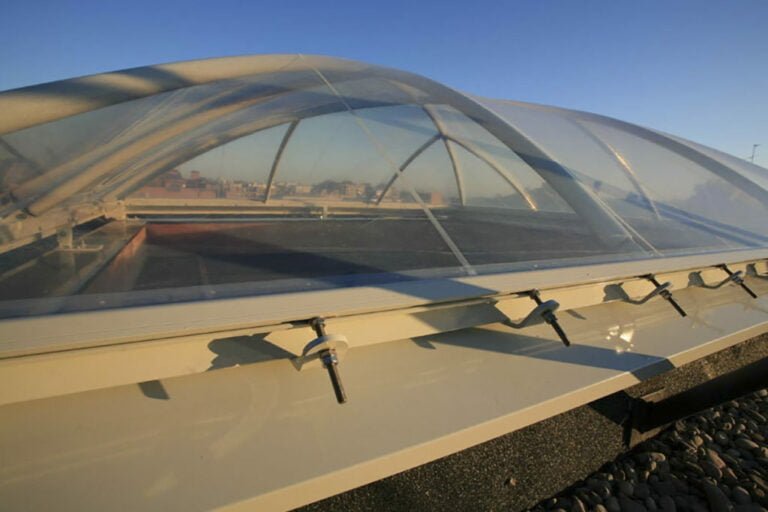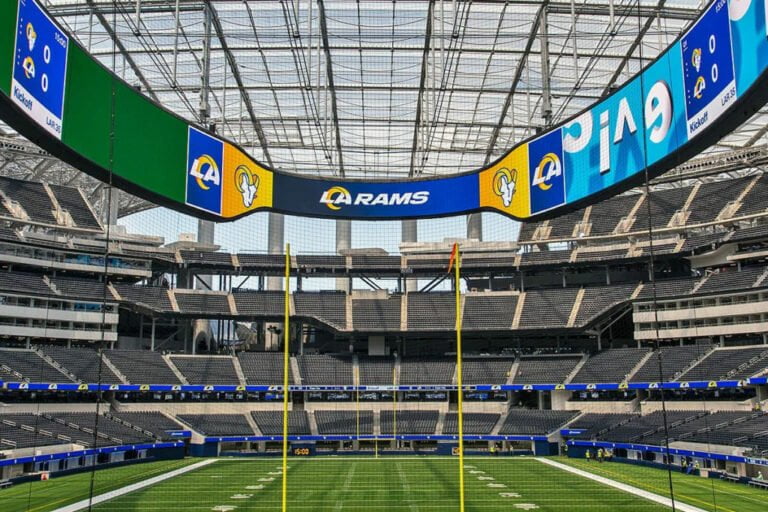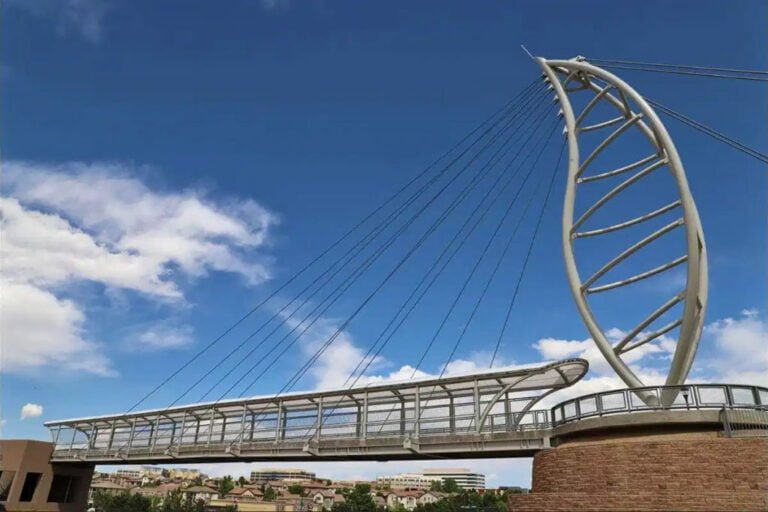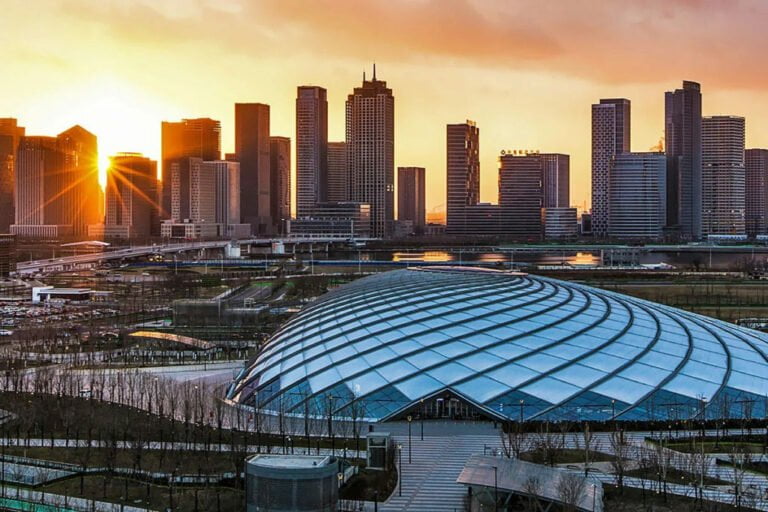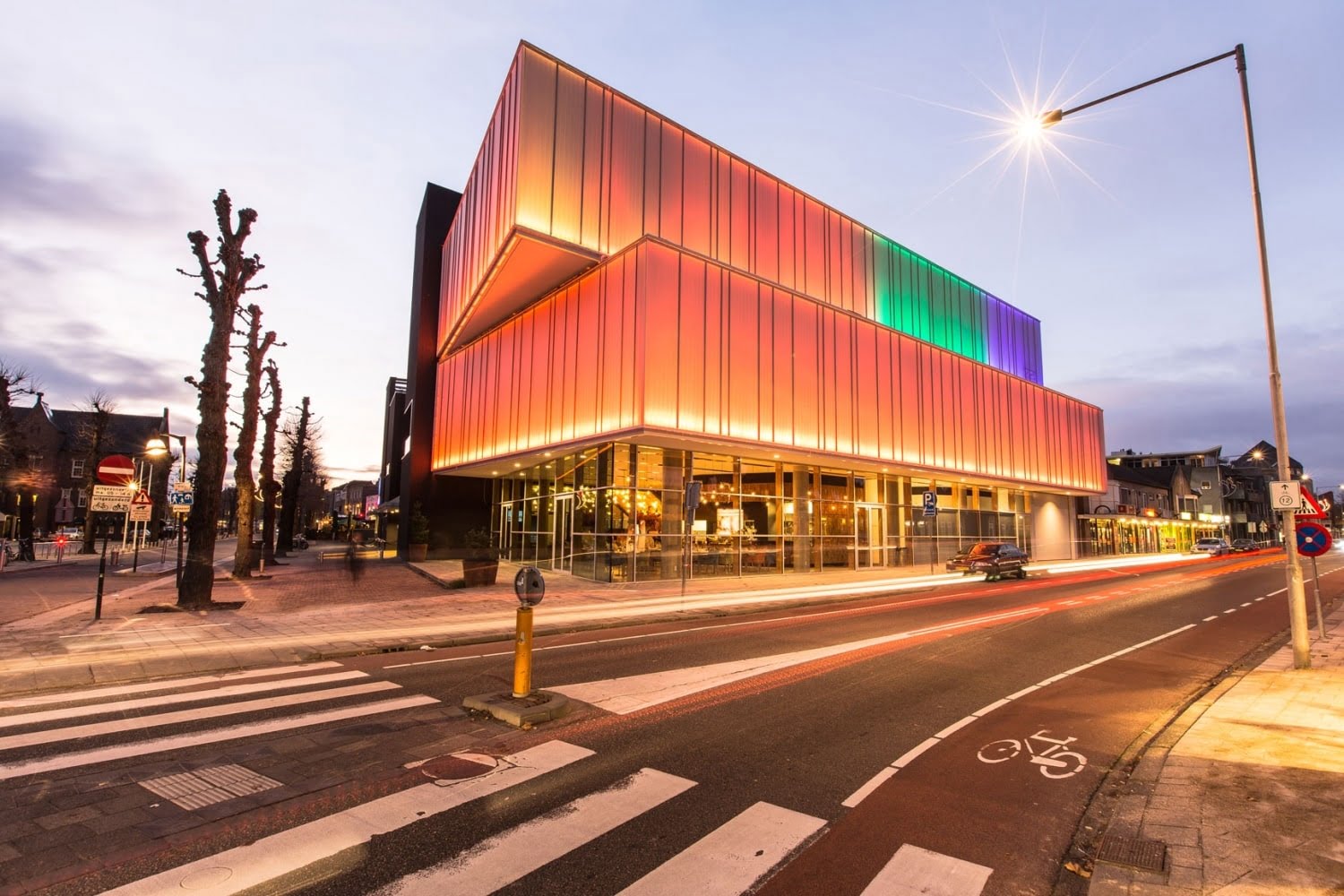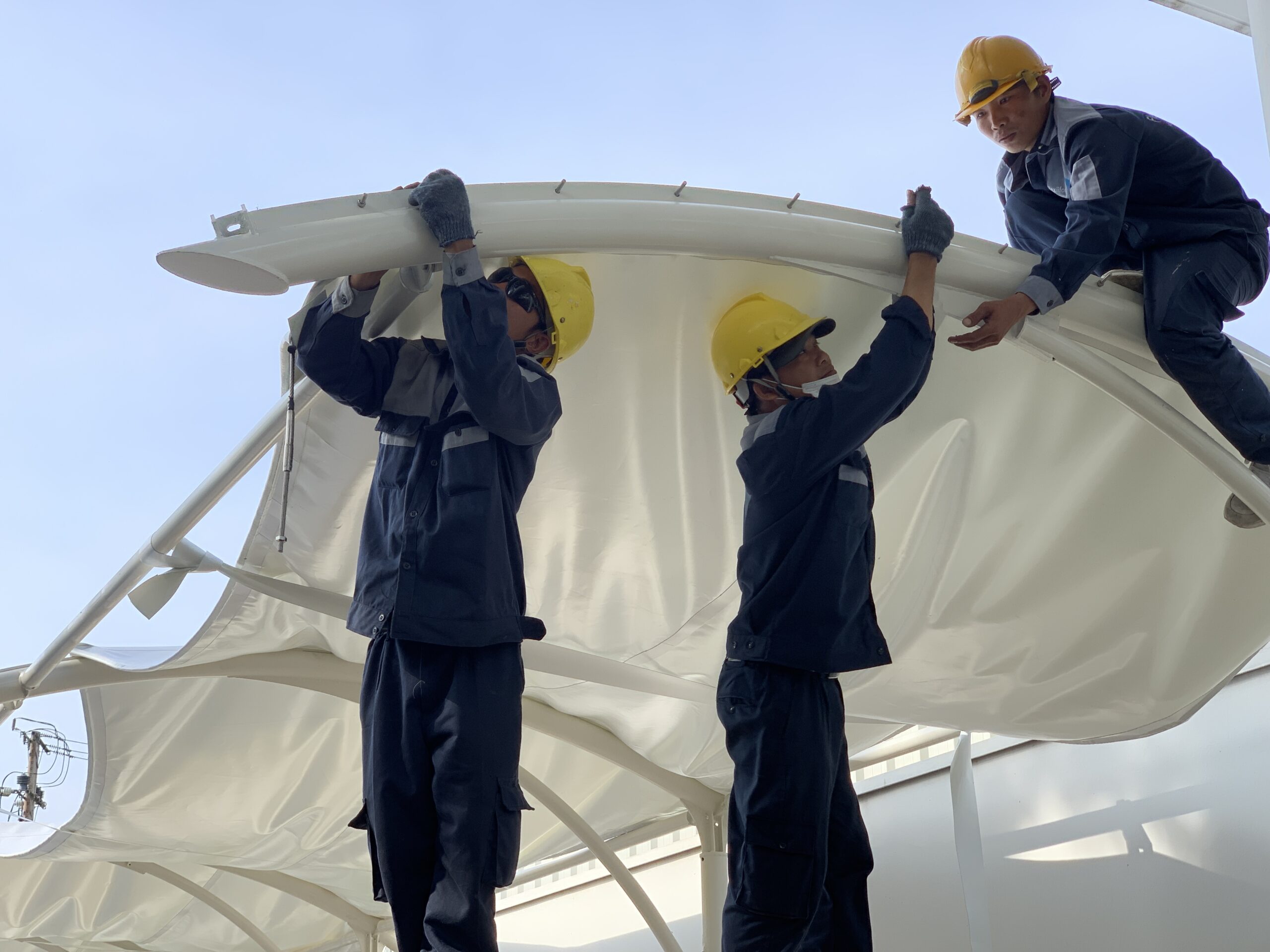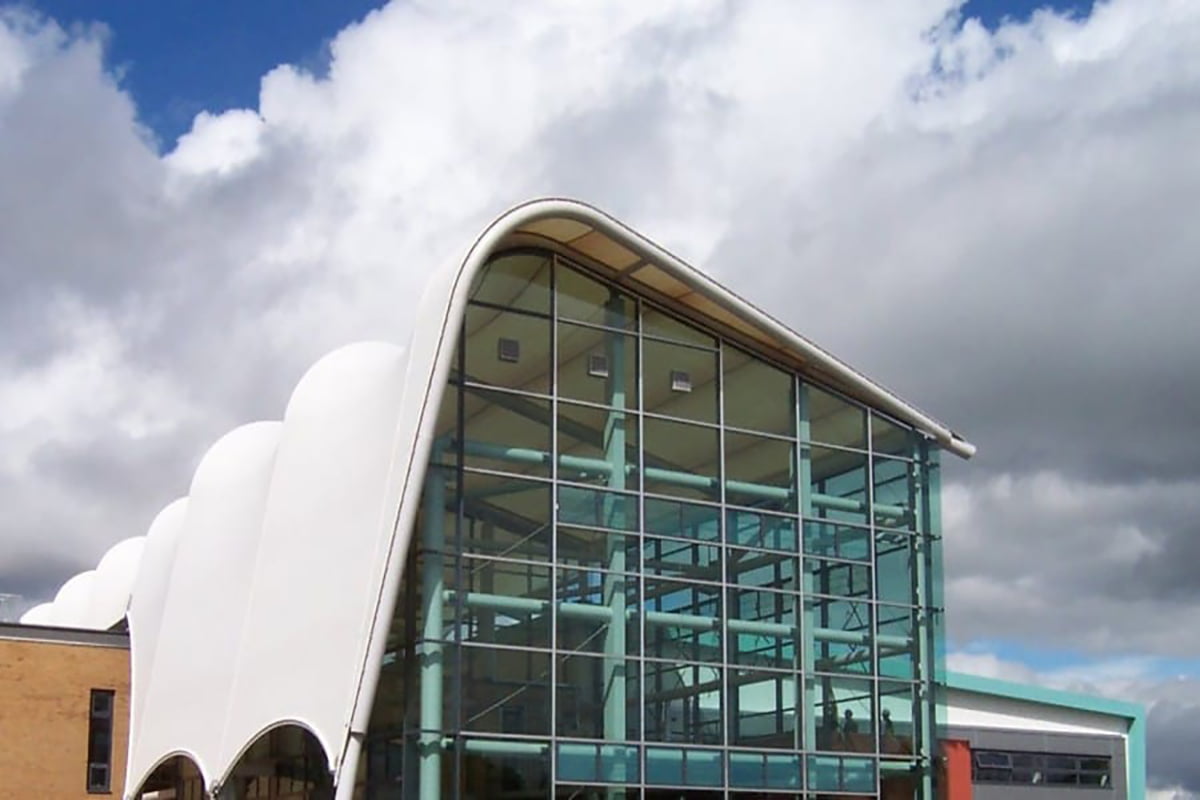Current Situation and Solution: ETFE Design and Construction – Advanced Material Solution for Modern Architecture
ETFE (ethylene-tetrafluoroethylene copolymer) material was first developed in the 1970s by DuPont as a lightweight, heat-resistant material for the aerospace industry. In 2001, this material officially debuted as an architectural material when it was applied to the large-scale Eden Project in Cornwall, England. Design consulting unit Arup ETFE was chosen for its ability to withstand external weather impacts and its transparent, light-transmitting properties, which are especially suitable for indoor vegetation. In particular, the pattern printing technique on ETFE can control the light area according to the needs of the project, bringing great advantages for light-transmitting applications in different climatic conditions.
—
Technical Requirements Analysis & Solution Context
In modern architecture, especially for large-scale projects or those requiring high transparency, traditional materials such as glass are often limited by weight, cost, and optimal thermal insulation. These projects require an envelope solution that is not only lightweight and durable, but also flexible in controlling light and temperature, environmentally friendly, and easy to maintain. Other challenges include natural disaster resistance (earthquakes, fires), anti-fouling, and material longevity. Integrating technology into maintenance and operations is also an important requirement to ensure optimal performance and safety.
—
Technical Solutions
ETFE design and construction offers a comprehensive and flexible solution, meeting the strict technical requirements of modern architecture.
ETFE material properties
Unlike conventional plastic materials, ETFE stands out for its superior durability in harsh weather conditions and its complete recyclability. Using ETFE material significantly saves operating costs and energy during production and transportation due to its light weight. Thanks to its good elasticity, ETFE works effectively even in natural disasters such as earthquakes and is capable of self-extinguishing in the event of a fire. The surface of ETFE material is also very slippery, preventing dust from sticking and reducing the need for care and maintenance. This allows for applications in buildings that require a long life such as schools, stadiums, sports facilities, or buildings with high architectural requirements.
Printing and dyeing techniques
ETFE pattern printing is very advanced, with many patterns that enrich the material and control the amount of light entering. The manufacturer offers more than 20 standard ETFE pattern prints and can print according to the project's requirements if the material volume is large enough. ETFE material is also available in a basic color palette. Surface treatments during the manufacturing process can change the properties of the film, allowing control of light transmission and creating a backdrop with a light-reflective surface, suitable for event projects. The radiation treatment also reduces the level of infrared and ultraviolet rays transmitted through the film, helping to improve the energy consumption of buildings.
Insulation and transparency parameters
In the design and construction of ETFE, the single-layer form has a U-value of approximately $5.6 \text{ W}/\text{m}^2\text{K}$. A standard triple-layer seal can achieve a U-value of $1.96 \text{ W}/\text{mK}$, which is better than triple-glazed glass. The air-cushion insulation quality of ETFE roofs can be improved by adding more layers of ETFE (up to five layers) or by coating the membrane with a specialized compound. ETFE is known to be as transparent as glass, capable of transmitting the entire region of directly absorbed light ($380-780\text{nm}$). A single-layer ETFE roof has a light transmittance of approximately $85\%$, and multi-layer ETFE will have a reduced light absorption. This material also has very good UV transmission ($320-380\text{nm}$) (approximately $83-88\%$), allowing vegetation and plants under ETFE roofs to thrive.
The G-value (solar transmittance) of ETFE roofs can be as low as $0.48$ for a 2-pane system with a fritted top surface and approximately $0.35$ for a 3-pane system (compared to standard glass of approximately $0.88$). It should be noted that the G-value is shape and location dependent and must be calculated on a project-by-project basis.
Maintenance process and operating equipment
Single-layer ETFE canopies have a simple and infrequent maintenance process. With air-cushioned ETFE, the air cushions and air volume need to be maintained approximately every 6 months. Maintenance checks include determining the cause of damage, the cause of deformation, checking the welds, ventilation system, and air filling equipment (including filters and operating adjustments). Repairs to holes and tears can be made on-site with patches, or individual cushions can be replaced. Maintenance personnel use rope access techniques in compliance with the regulations of IRATA.
The ETFE roof cushion systems are continuously inflated by an air handling unit with two electric motor-driven fans, consuming minimal energy. A state-of-the-art control system monitors performance, pressure, weather conditions, temperature, humidity and any faults. It can be remotely accessed to diagnose and adjust performance, automatically compensate for faults and send automatic alarms. In the event of a power failure, the cushion system will maintain pressure for 3 to 6 hours thanks to a non-return valve, a backup generator or cable tie system is recommended.
Fire safety and environmental friendliness
ETFE is a low flammability material ($270^\circ C$) and is self-extinguishing. In the event of a fire, the hot smoke will cause the membrane to soften, break down and shrink away from the source of fire to allow natural ventilation, without producing molten droplets or smoke. ETFE has been extensively tested and meets fire standards such as DIN 4102 B1, EN 13501-1 B-s1, d0, NFPA 701.
ETFE is a class II material recognized under the Montreal Protocol, is easily recyclable and has a lifespan of over 50 years due to its resistance to degradation from UV rays, sunlight or pollution. Excess material from production can be effectively recycled. Its light weight makes it easy to transport, reducing costs. Cleaning and maintenance require less chemicals, making it environmentally friendly, thanks to the material's non-stick properties.
Drainage factor
All ETFE structures are designed with a curvature to ensure rainwater does not pool, directing it to the roof edge to drain into the main gutter system. Gutters are not supplied as standard but can be incorporated if required.
Issues affecting
Birds pose the greatest threat of causing small punctures in ETFE roof cushions. However, this does not threaten the stability of the entire cushion as the monitoring system automatically regulates the pressure. As a precaution, all ETFE roof structures are fitted with bird arrestor cables to prevent birds from perching on the structural frames.
—
Results and Performance Evaluation
ETFE design and construction solutions have revolutionized modern architecture, providing buildings with high transparency, light weight and outstanding energy efficiency. The ability to control light and temperature, a lifespan of up to 50 years, and self-cleaning and environmentally friendly properties have made ETFE the optimal choice for complex projects such as nurseries (Eden Project), stadiums, and buildings with high architectural requirements. The air pumping system and intelligent control ensure stable and safe operation, even in harsh conditions. Fire resistance and easy repair also contribute to safety and reduce operating costs, making ETFE a sustainable, efficient and uniquely aesthetic building material, suitable for any project with high architectural requirements or requiring an optimal light-transmitting material to replace glass.
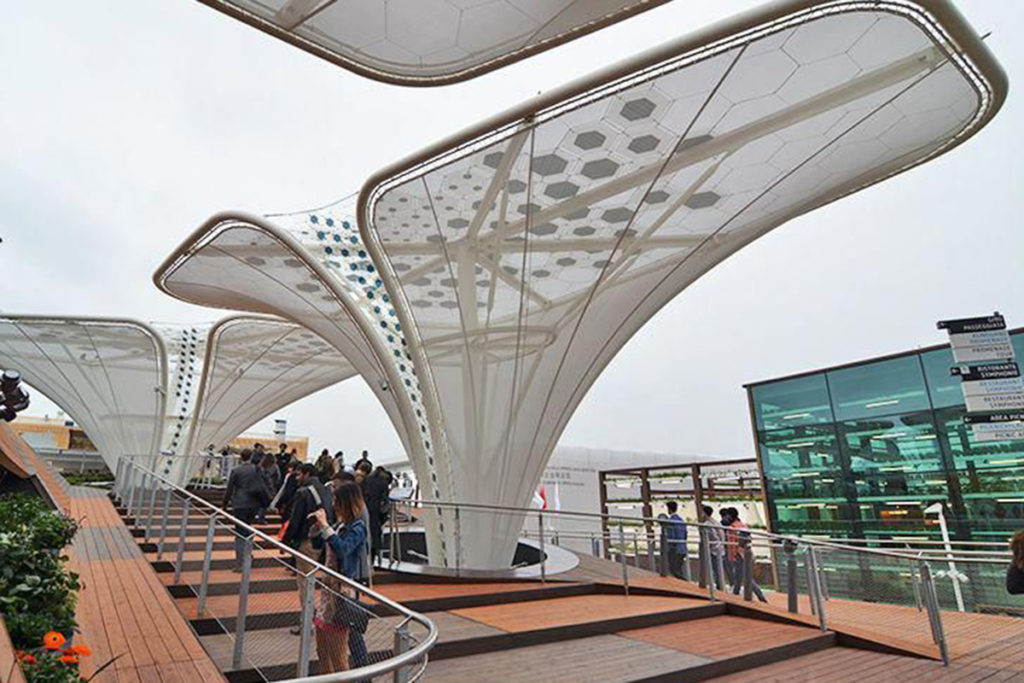
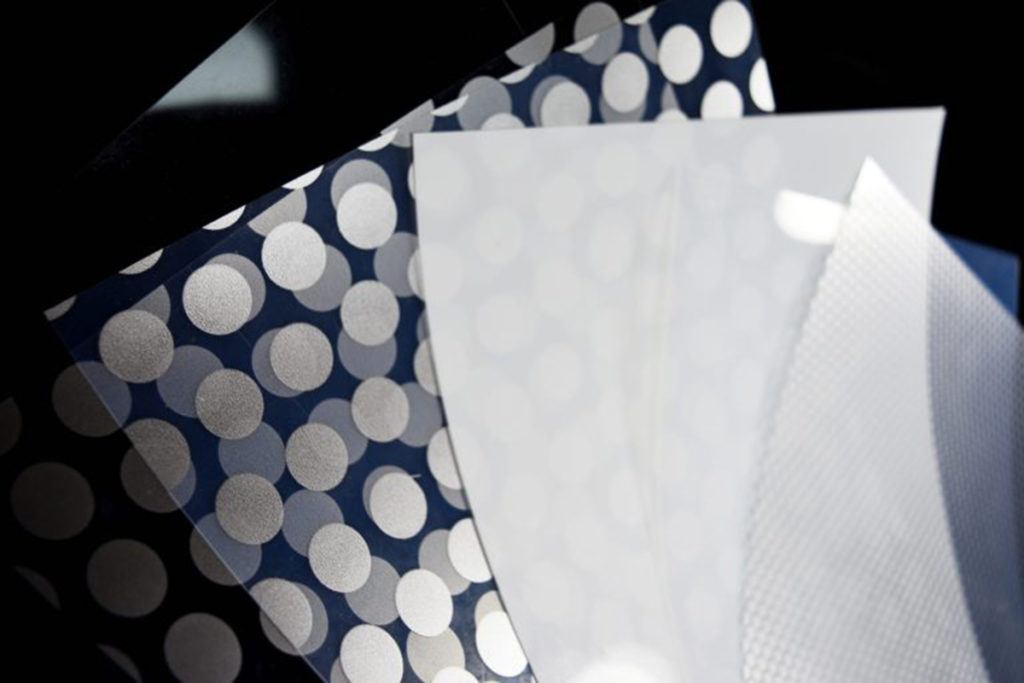
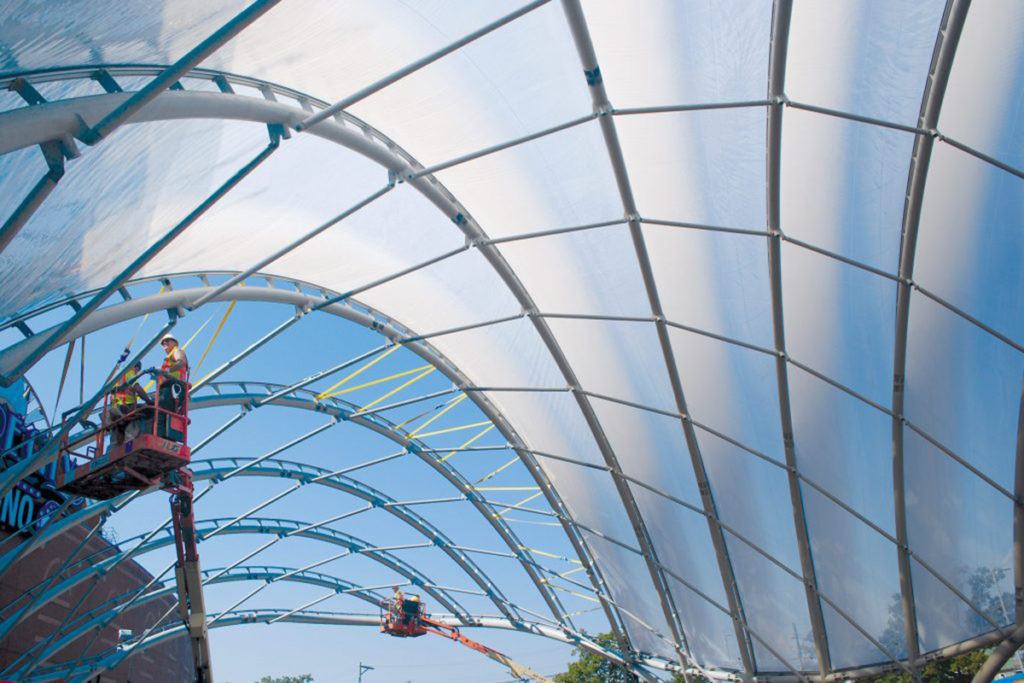
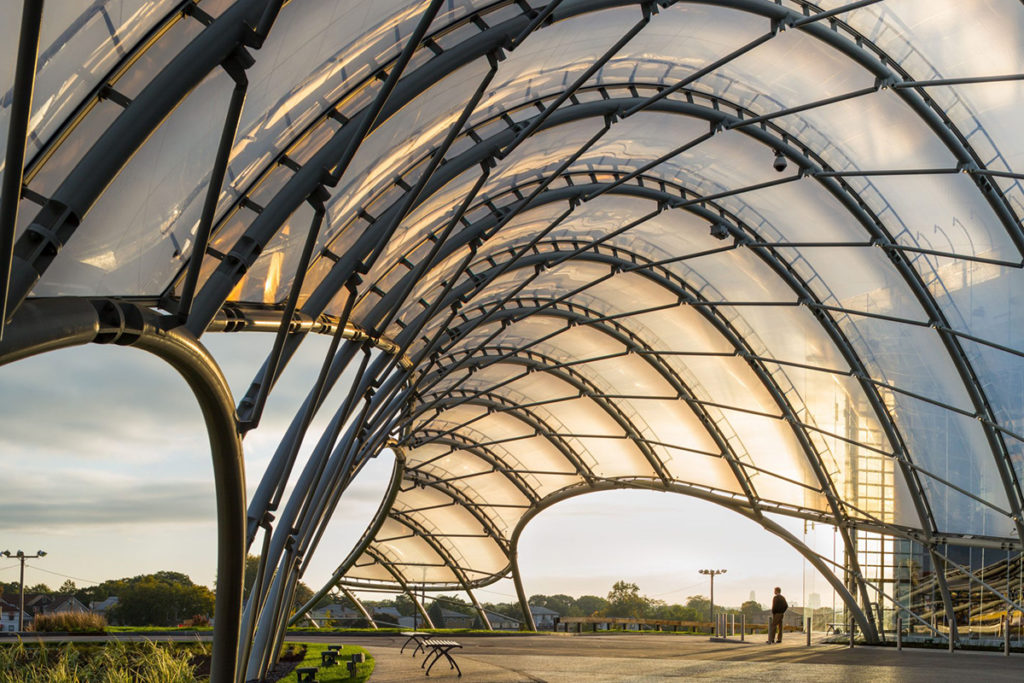
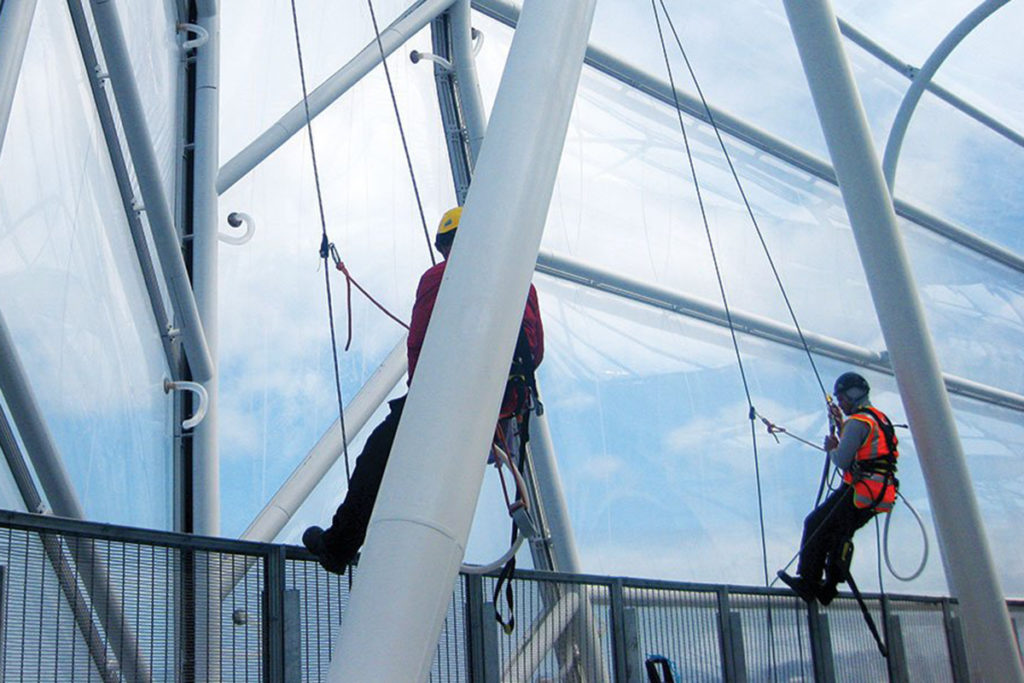
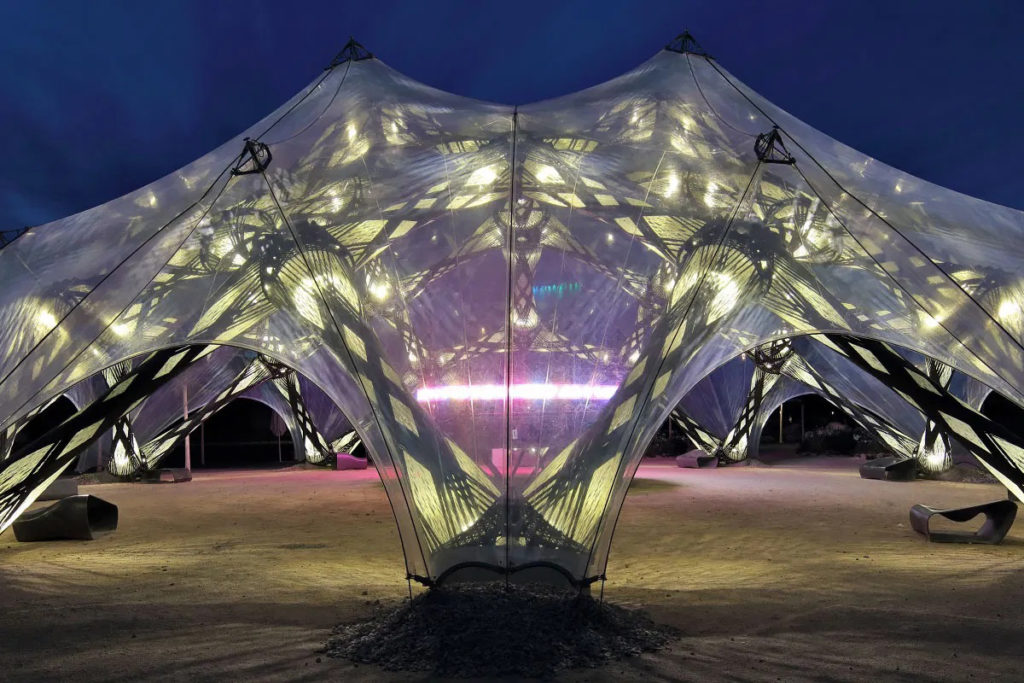
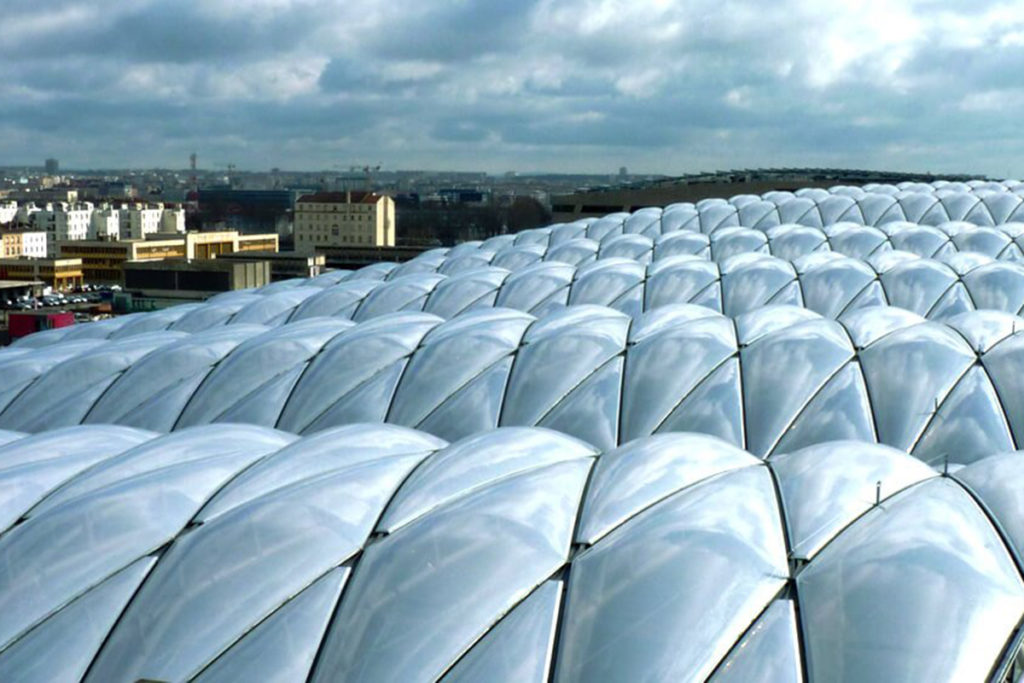
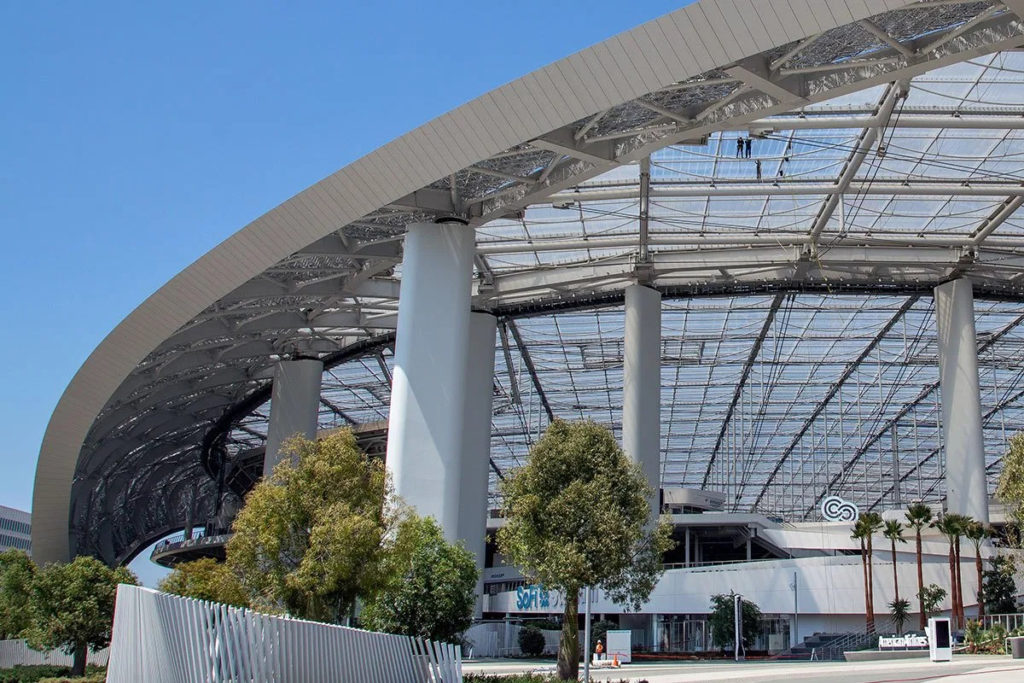
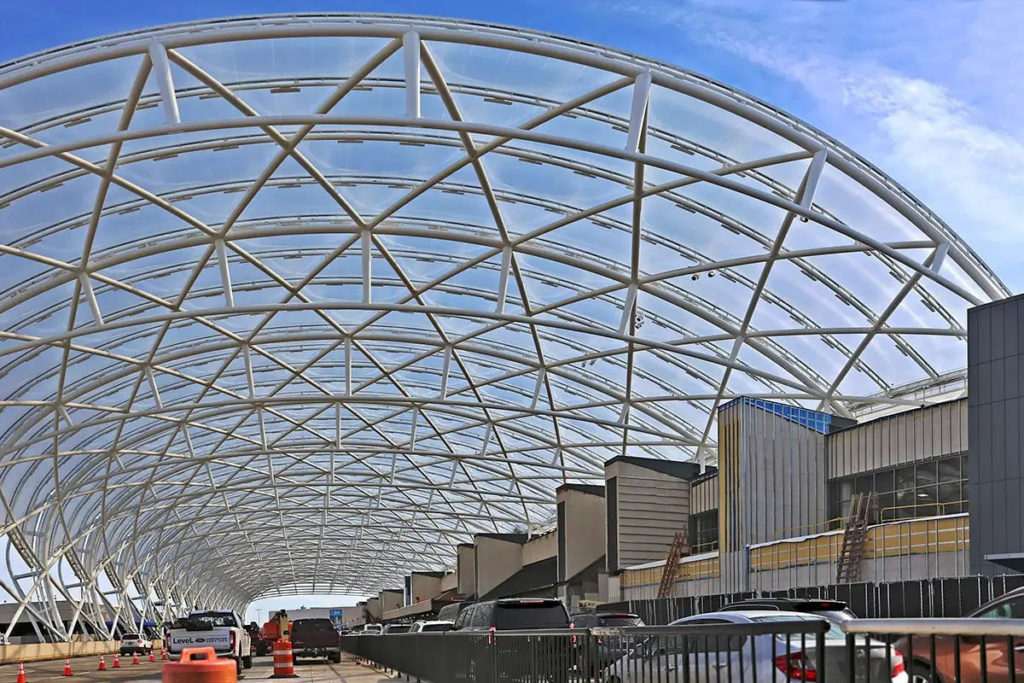
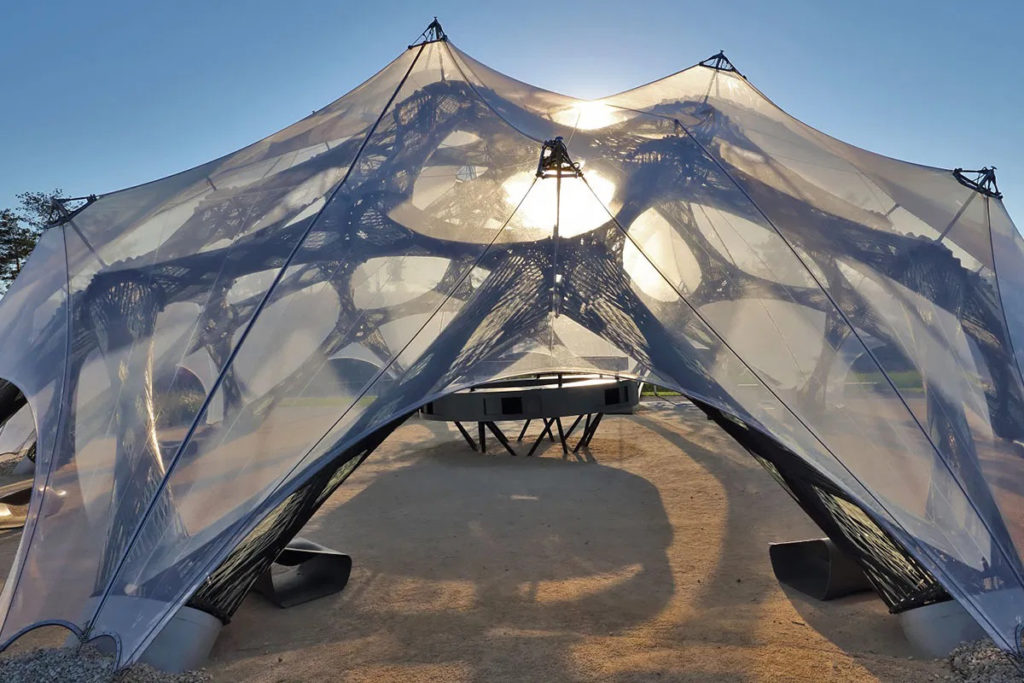
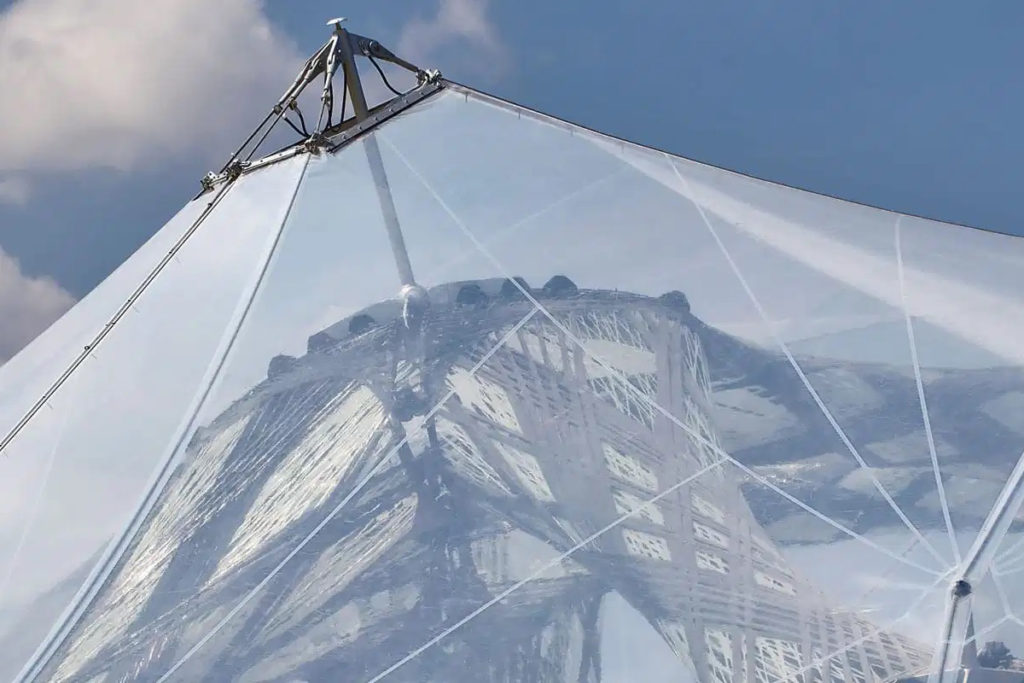
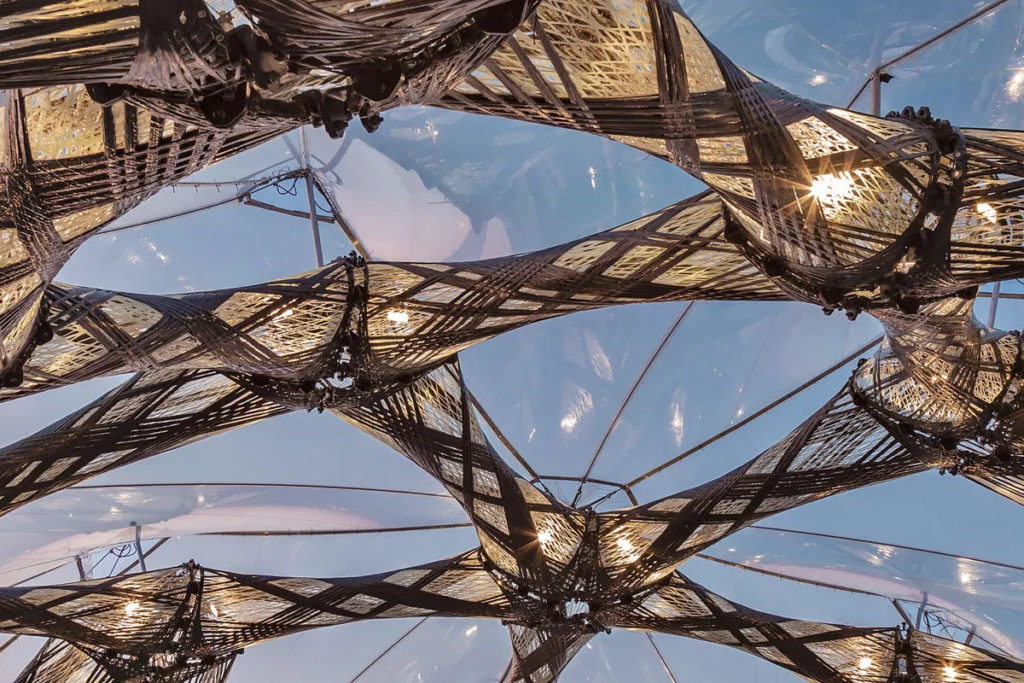
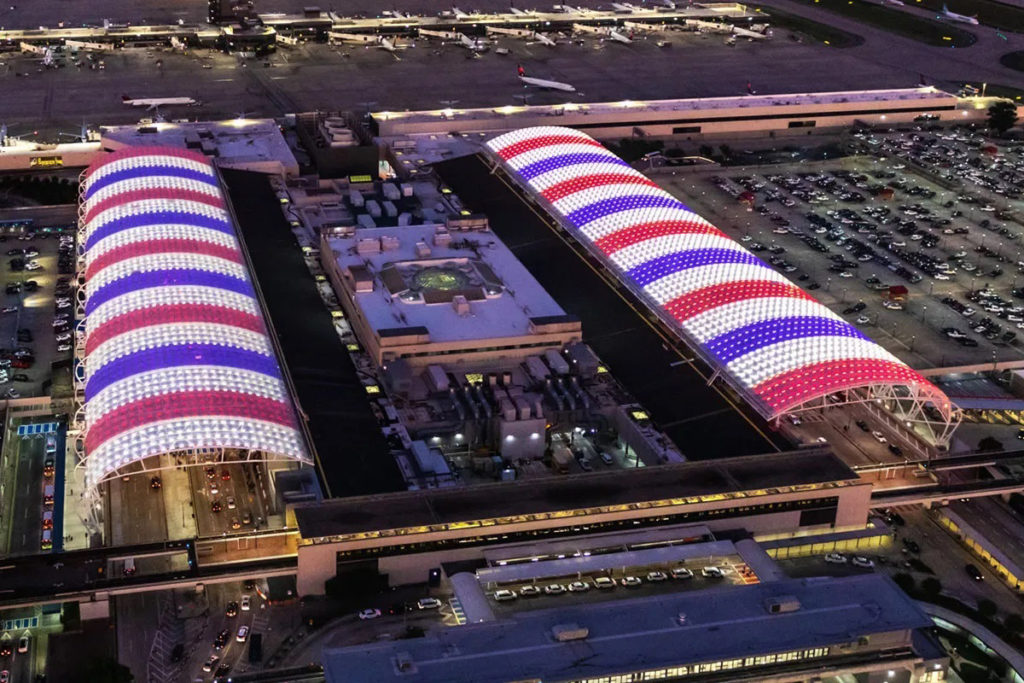
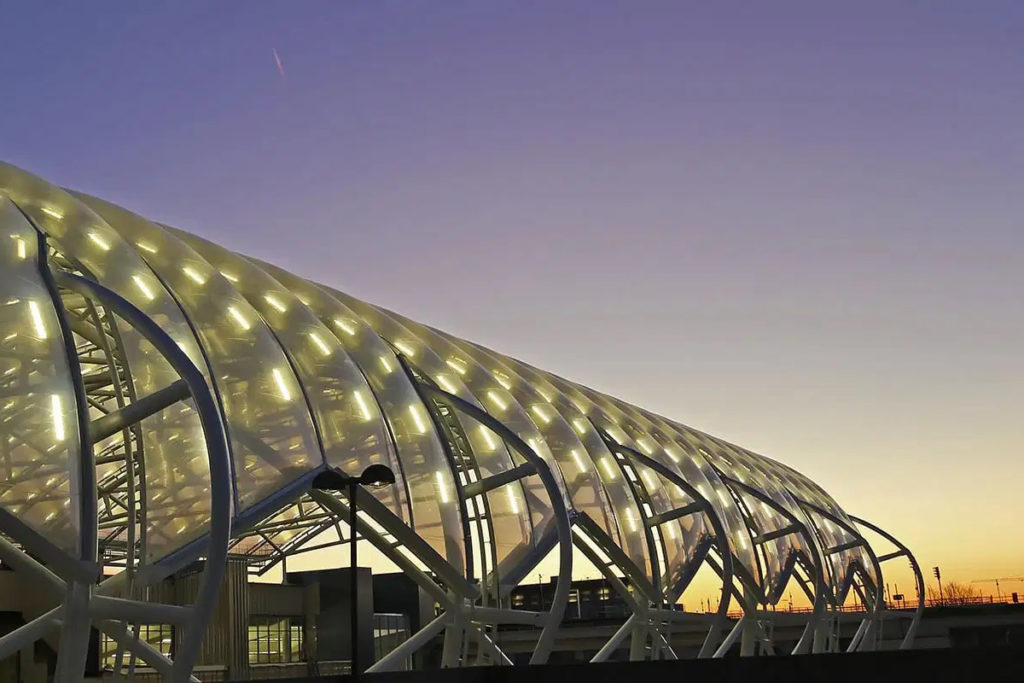
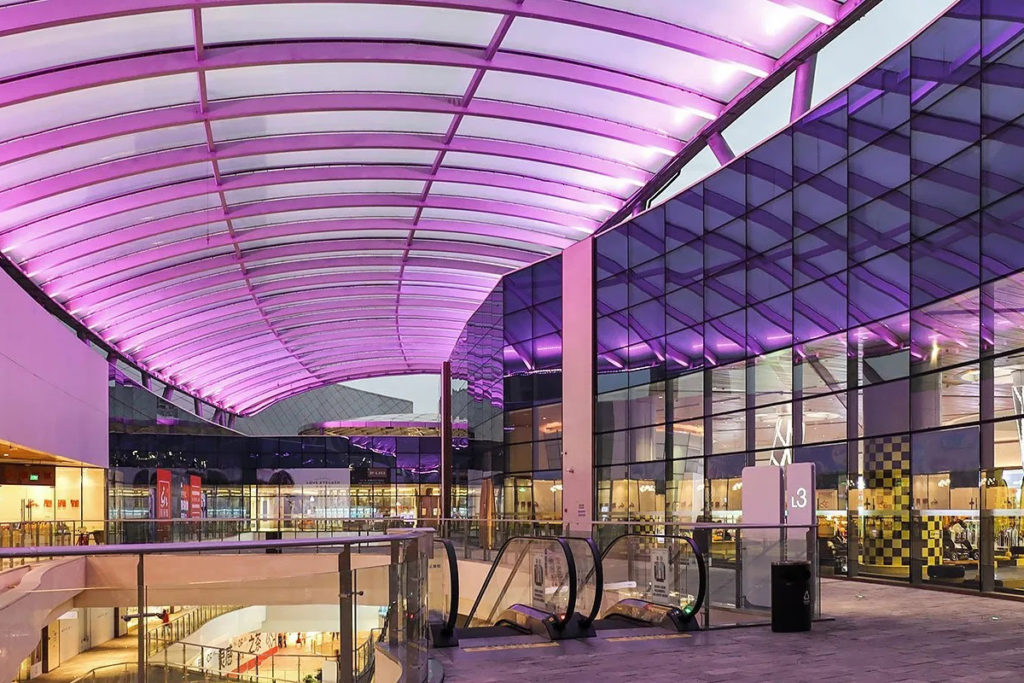
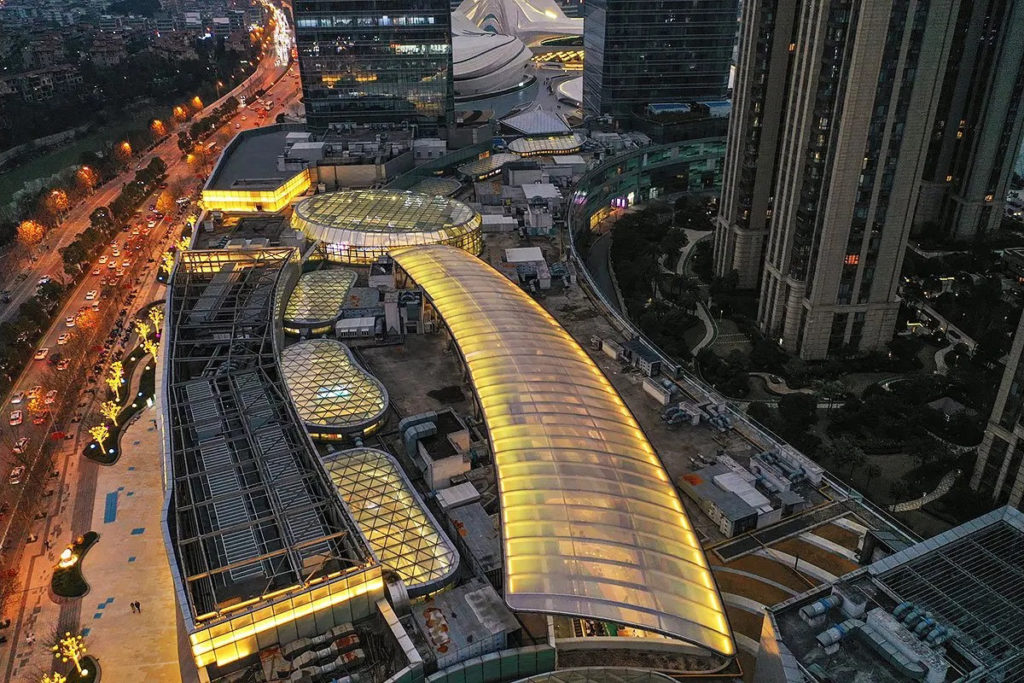
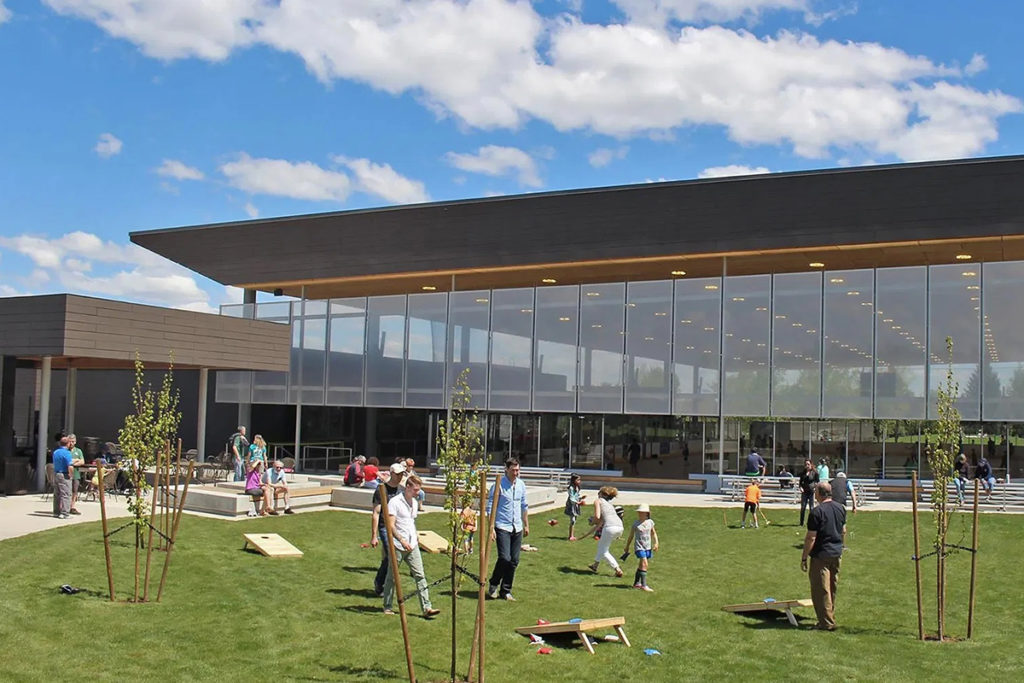
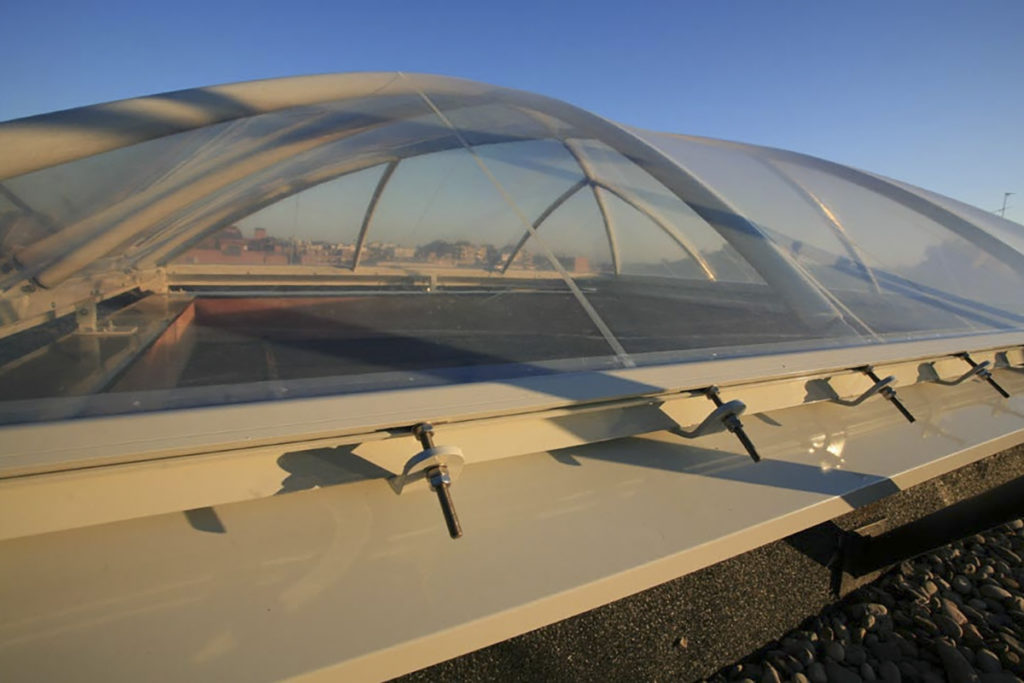
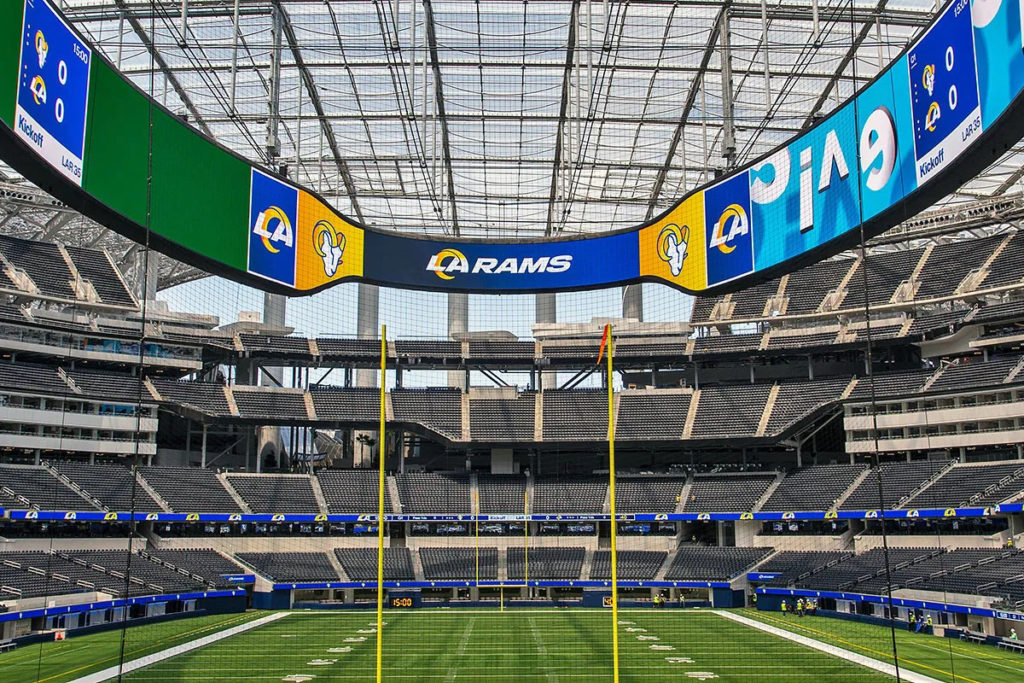
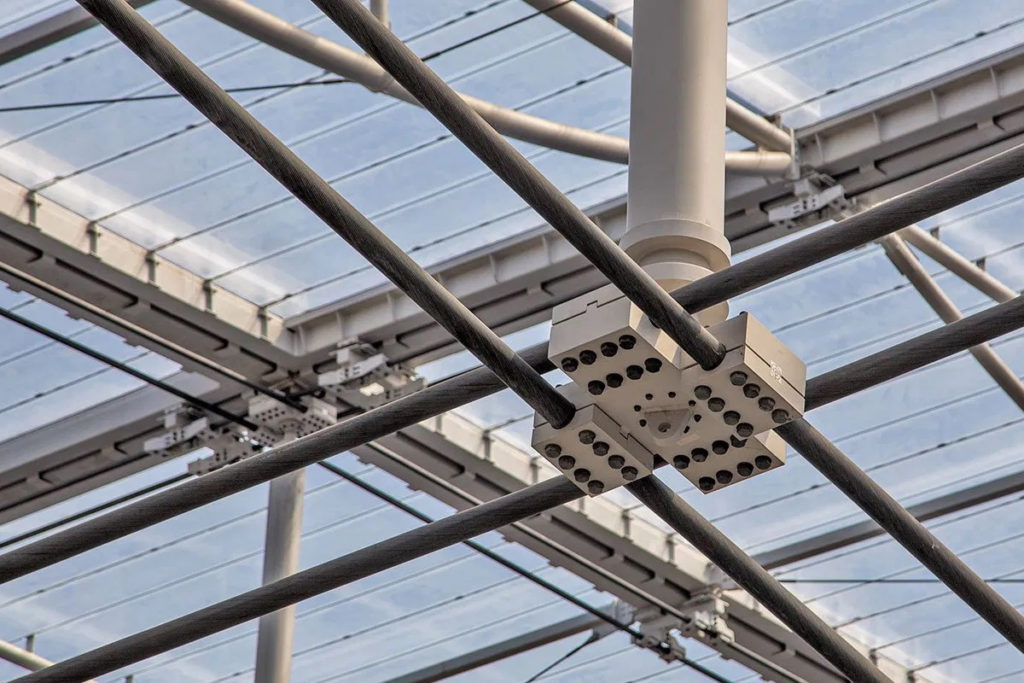
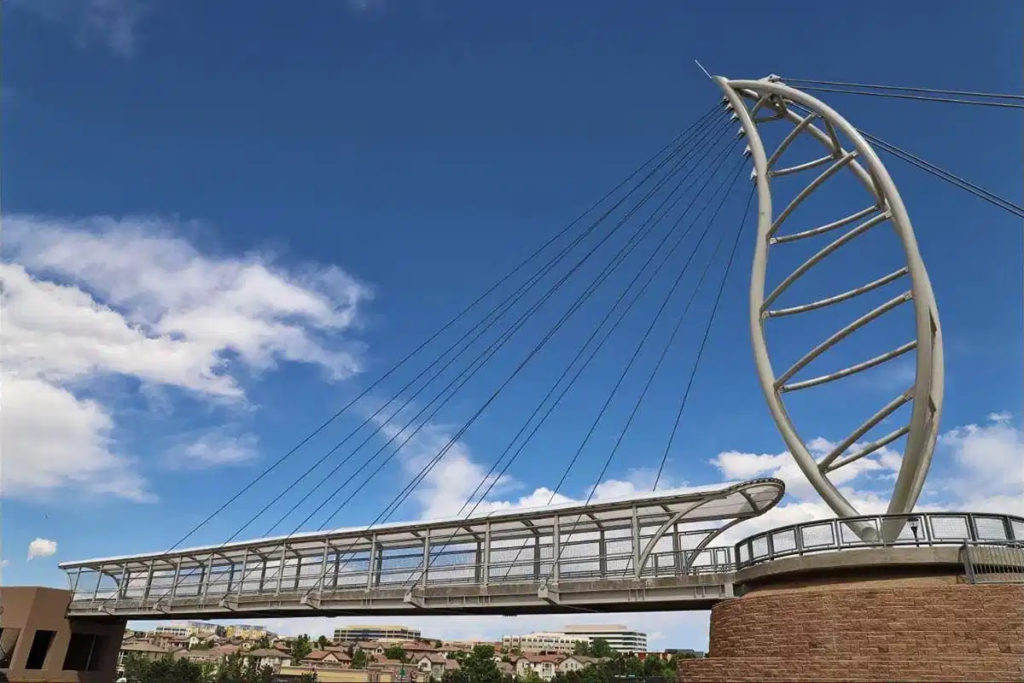
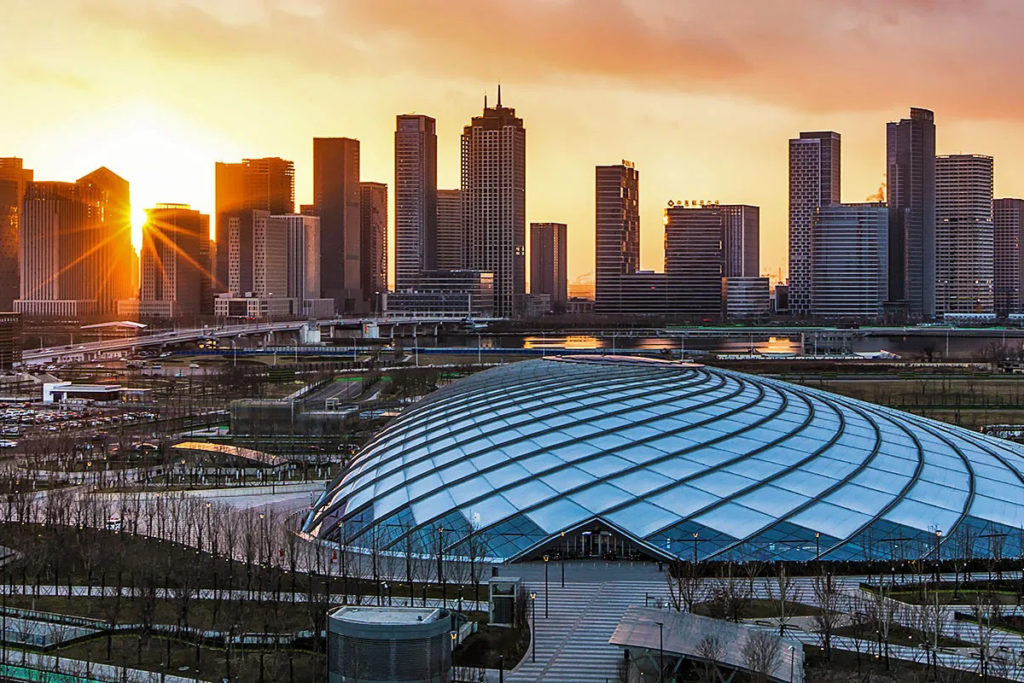
—
Contact Technical Consulting
Flexiiform is a company that designs and constructs professional Tensile Fabric roofing services in Vietnam. We are proud to be the only unit in Vietnam to receive expert advice from FasTech Company – The leading company in designing and constructing tensile canvas roofs in Thailand. With a team of well-trained and skilled Architects and Engineers, along with the strength of creative ideas in designing covering solutions from high-end canvas structures to suit all projects and the need for architecture related to materials, design and construction of ETFE, or need for a type of light-transmitting material to replace glass in an optimal way. We are committed to bringing the highest quality, sustainable and most effective solutions for your project.
For expert advice on ETFE solutions or to request a detailed quote, please contact us. You can read more Reference video and related videos.
Contact information:
Company: Flexiiform
Phone: +84 8678 68830
Website: https://flexiiform.vn/
Fanpage: https://www.facebook.com/flexiiform/



